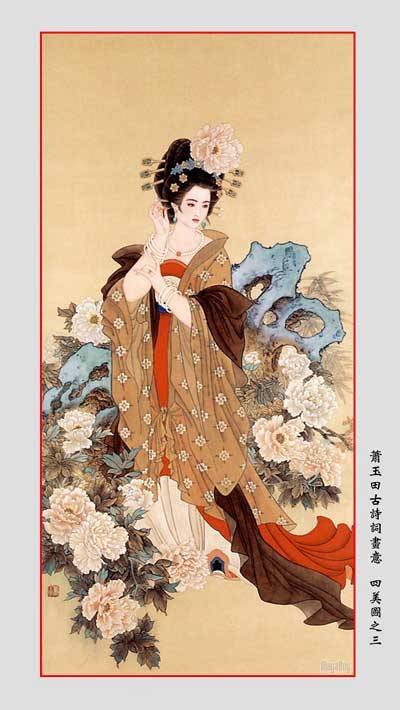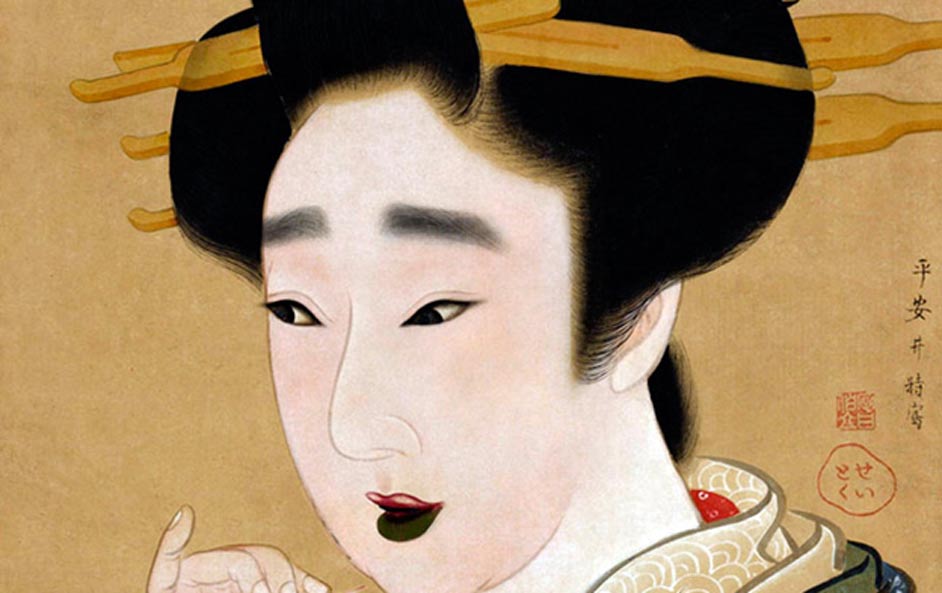Mirror, mirror, am I pretty? - Beauty standards throughout history: Ancient Times
Mirror, mirror, am I pretty?
- Beauty standards throughout history: Ancient Times -
It is a well-known fact that what is considered beautiful today in a European country is very different from what an Asian country regards as eye-pleasing. These ideals do not only differ from state to state, but various periods had opposed ideals for the human body. From ancient times, human society was in the quest for beauty, but no society had the same ideals for it. Now, let’s walk through the trends of the most important eras in history.
A) Ancient Egypt
The first conception regarding beauty comes from Ancient Egypt. We can identify what this civilization considered beautiful by analyzing hieroglyphs or drawings (on walls, mostly on tombs). That’s how we know that a face was considered beautiful if it was symmetrical and had large, expressive eyes and black hair (especially if it had bluish shadow to it).
The Egyptians were one of the first civilizations that indulged in the practice of make-up. To make their eyes appear bigger they used heavy black eyeliner made out of kohl. This also served as sun protection. Most of the time, they wore a wig, as, due to the heat, Egyptians used to shave their heads. The hot climate in the area has shaped even more of their tastes.
People were considered more beautiful if they possessed golden, bronze and “bright” skin. They appreciated long and graceful necks and a very slim body with a high waist and narrow hips. One representative figure is Queen Nefertiti.

Queen Neffertiti - one of the most beautiful women in Ancient Egypt
B) Greeks and Romans
The Greeks and Romans had the same model for human beauty. That is because, after the Romans occupied the territory of Greece, they were so impressed by how much the Greeks implicated culture and beauty in their day-to-day life and what they meant to occupied people, that they decided to take them up for themselves. Before the conquest of Greece, there is no known ideal for beauty in Rome, as, in that period (from formation to the "Owner of the Mediterranean Sea") their main focus was on expansion.
The Greeks are considered the people who invented the notion of beauty, as their main heritage lays in the abundance of philosophical texts they had left us. If you take just a look at the architecture from Ancient Greece, which mostly includes temples and amphitheaters, you can observe that they were fascinated by one science in particular: Math. The beauty for Greeks laid into the geometrical shape, as they found it very masculine. The Greeks, unlike the rest of the ancient civilizations, did not prefer the female form with big, expressive eyes, long necks or small feet (depending on the culture). This can be seen from looking at their goddess of beauty, Aphrodite, as she does not have the female parts accentuated, but rather hidden, their place being taken by a more robust figure. They took the idea of the priority of men in front of the women that females were considered “disfigured” versions of males. Their ideal body shape was plump, full-bodied with light skin.

Aphrodite/Venus - the goddess of beauty and love in Greek/Roman mythology
For them, beauty was also a sign of power and wealth. They appreciated long hair, but only upper-class women afforded to keep it long.
But hey also had more strange beauty standards and rituals. While nowadays we despised the so-called “unibrow” and tend to pluck it, the Greeks were pretty much fascinated by it, so much that they used a dark pigment to draw them if not had from mother nature. And that’s not all. They also used to bleach their hair in vinegar. This caused hair loss, making wigs popular among them.

Greek unibrow
C) Ancient China – Han Dynasty and Tang Dynasty
Another ancient culture that put their mark on beauty is the Chinese one. Their standards might come as horrific to the modern people, as they required the legs to be rather small. This made women tie their feet into painful positions to ensure that they won’t grow. But overlooking these painful customs, the Chinese people had a meaning behind all these beauty ideals.
There were 2 centers of beauty during Ancient China: Han Dynasty (202 BC – 220 AD) and Tang Dynasty (618 - 906). However, their standards are opposed. First, regarding the body shape, the Han Dynasty was all about slenderness, while Tang Dynasty (which was different from all the other dynasties in China) praised plumpness. They viewed it as a sign of healthiness and opulence.
Han Dynasty woman
The Tang Dynasty, in general, had a particular current for thickness. Most of the parts in which this applied are in the way the women painted their lips and eyebrows. They painted almost all the contour of the natural lips, whereas the Han Dynasty woman put red only in the center. During the Han Dynasty, the pigment used to color the lips was made out of Safflower that produces Yanzhi.
While most dynasties preferred thin and long eyebrows in the shape of the silkworm, the Tang Dynasty (obviously) had a different perspective. They praised the thick eyebrows, which were named “immortal moth eyebrows”.

Yang Guafei - one of the most beautiful consorts during Tang Dynasty
However, no matter the dynasty we talk about, long and narrow eyes had always been in fashion. They were a sign of tenderness, while females who possessed large eyes were considered hussies. The Ancient Chinese were also very fond of white, pale skin. Of course, the type of skin was most commonly obtained by make-up. This symbolized cleanness and purity. It was also a sign of a high-class woman, a person who did not engage in physical labor. Foot binding had the same conception behind and it was regarded as sex appeal, as they brought with them a sense of mystery. Another sign of erotism was seen in the practice of painting the lips and cheeks red.
D) Heian Japan (794 - 1185)
The most well-known beauty standard in Heian Japan was the long black hair. Women used to grow their hair long, down the spine, reaching the ground. Sometimes their hair was even long stretching behind them. The longest recorded hair from that period was 7m long.

Another common practice was the smudgy eyebrows. To achieve this aspect, Japanese women used to shave off their natural eyebrows, and paint new ones instead, on their forehead, very close to the hair-line. This was done by dipping their finger in black powder.
And if this was not weird enough for us, the contemporary people, they used to paint their this black. This was a direct result of the fact that they painted their faces as white as possible, so the teeth looked yellow in comparison. Their black teeth also matched with the hair.

Smudged eyebrows and black teeth in Heian Japan
E) India’s Gupta Age (330 - 550 AD)
During this period, make-up evolved so much, that it became a part of their every-day life. Like in Ancient Egypt, women used to contour their eyes with kohl. This way, their eyes seemed larger. Also, the rouge became pretty popular. Women during the Gupta Age used vibrant colors on their eyes and lips, as a sign of strength. They also used bleaching cosmetics to achieve a lighter shade to their skin (mostly honey-like).

Ideal, Gupta Age woman
However, women used to put fresh flowers in their hair, to look natural. This also symbolized a connection to the gods. From this time, dates the red circle married women use to paint on their foreheads.
This is all for today’s post. Be sure to check during the following days for the second part. Part 2 will cover the beauty trends during more recent times, starting from the middle age up to the French revolution.

Comentarii
Trimiteți un comentariu